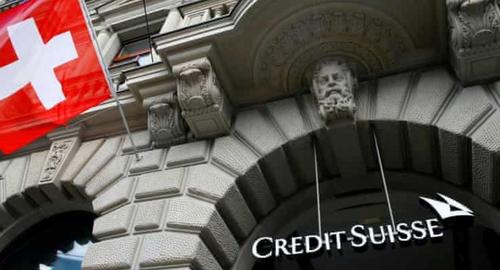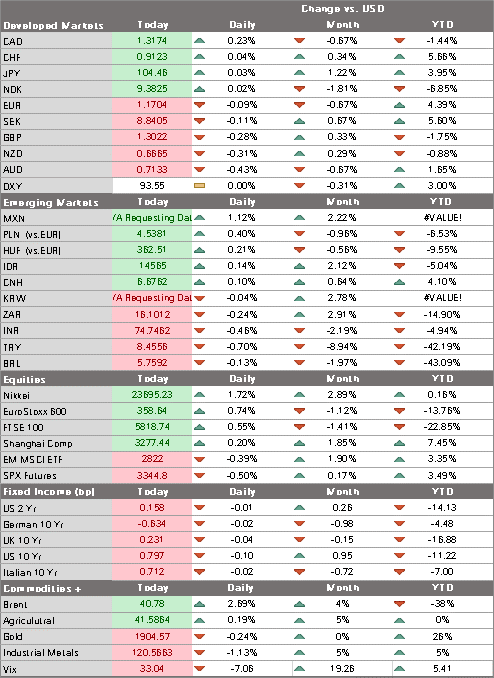Roughly a weekand a-half has passed since Credit Suisse gated funds containing BN in assets packaged by Greensill, the troubled financial innovator that suckered in former British PM David Cameron, SoftBank and legions of clients and investors with its stated mission to “democratize” supply-chain finance. Now that the trade finance emperor has fallen (having filed for administration earlier this week), Credit Suisse is starting the arduous process of convincing regulators and its clients that the bank is taking steps to ensure that something like this never happens again. In keeping with its scandal-response playbook, the Swiss megabank is launching an internal investigation (kind of like it did after the corporate espionage scandal which felled its former CEO,
Topics:
Tyler Durden considers the following as important: 3.) Swiss Banks, Featured, newsletter
This could be interesting, too:
Marc Chandler writes Sterling and Gilts Pressed Lower by Firmer CPI
Ryan McMaken writes A Free-Market Guide to Trump’s Immigration Crackdown
Wanjiru Njoya writes Post-Election Prospects for Ending DEI
Swiss Customs writes Octobre 2024 : la chimie-pharma détermine le record à l’export
Roughly a weekand a-half has passed since Credit Suisse gated funds containing $10BN in assets packaged by Greensill, the troubled financial innovator that suckered in former British PM David Cameron, SoftBank and legions of clients and investors with its stated mission to “democratize” supply-chain finance. Now that the trade finance emperor has fallen (having filed for administration earlier this week), Credit Suisse is starting the arduous process of convincing regulators and its clients that the bank is taking steps to ensure that something like this never happens again.
In keeping with its scandal-response playbook, the Swiss megabank is launching an internal investigation (kind of like it did after the corporate espionage scandal which felled its former CEO, Tidjane Thiam) to determine exactly what led to the bank getting involved with Greensill, and turning a blind eye to the trade-finance assets’ concentrated exposure to Greensill clients like Sanjay Gupta’s GFG Alliance.

Credit Suisse gated the Greensill-linked funds earlier this month after Greensill’s main insurance supplier refused to cover new notes issued by the firm, deeming them too risky. It soon emerged that these assets were heavily exposed to the struggling industrial empire controlled by Gupta. CS gated the funds because the bank said that without the insurance coverage the Greensill assets had become “impossible to value” – which is just a fancy way of saying that they just might be worthless.
The bank is now liquidating the strategy, a group of short-term debt funds for which Greensill had provided the assets and which had been held up as a success story as recently as December. The money pools are returning most of their cash and equivalents, though about two-thirds of investor money remains tied up. Many of the assets in the funds have insurance protection to make them more appealing for investors seeking alternatives to money markets. But the second-biggest of them, the High Income Fund, doesn’t use insurance. It’s also the fund with the least liquidity, with less than 20% of the net assets in cash.
Of course, Credit Suisse isn’t the only international financial institution to get caught up in the Greensill scandal: SoftBank was exposed last year for purportedly using the trade finance funds to shore up some of its portfolio companies by concealing some of their debt obligations. The Japanese telco/VC also poured more than a billion dollars into Greensill, touting the firm’s technological prowess. But as it turns out, the FT reported Wednesday that Greensill’s fabled technology platform was more myth than reality.
But SoftBank wasn’t the only investor to get suckered: As the FT reports, General Atlantic, known for its early backing of financial technology success stories, invested $250MM into Greensill in 2018, citing the firm’s technological prowess. GA’s co-president Gabriel Caillaux once praised the firm’s “fully integrated technology and funding solutions,” as well the company’s “competitive advantage” in the supply chain finance market. But as Apollo discovered, Greensill’s technology platform actually relies on technology provided by a third-party firm.
It almost makes one wonder how Greensill ever managed to develop its reputation as a leading fintech champion?
Tags: Featured,newsletter







